Lennart van Bolderick - Chief Financial Officer at Super B
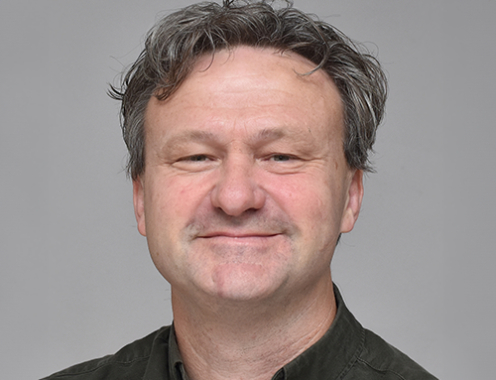
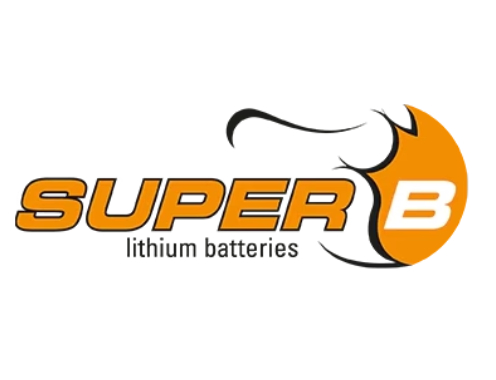
Lennart van Bolderick is the Chief Financial Officer at Super B, a producer of advanced lithium-powered batteries.
In conversation with Georgia Wright, he discusses the impact and opportunities of ESG at Super B, the evolution of AI, and the risks that have contributed to his career success.
Lennart will also be a panelist at the World Finance Forum in Amsterdam in June 2025, where he’ll delve deeper into AI in Finance. Outside of his corporate role, he runs a wool project in the Netherlands.
Can you share an insight into your career journey and the risks you've taken to contribute to your success?
The first ten years of my career were in banking and insurance. Then the economic crisis in 2008 happened and the first banks went bankrupt, which was unimaginable until then. I was a contractor, but from one day to the next, they stopped hiring.
I was forced to take a risk and move into manufacturing and distribution, taking a step back from banking and insurance companies, and moving into the small and medium enterprises. That coincided with my move from Amsterdam to the east of the Netherlands.
I now live outside the city, where more of those small and medium enterprises are. It coincided well with my belief that those types of companies are really the engine of the economy; that is where the energy comes from, the innovations, and the entrepreneurship. I’m really happy being in this business environment with businesses anywhere from ten to 50 to 80 million. The businesses can also either be corporate or small businesses with a corporate structure, like John Crane.
Now, I'm working more in a standalone small and medium-sized business, which is very innovative. That’s what I really like. So, the risk I took was moving from one kind of business, like banking and insurance, to manufacturing distribution. I like the dynamics of that far more; we deal directly with suppliers, customers, and produce tangible things.
Has your banking and insurance experience supported you in some of the directions you’ve gone in?
Yes, of course. The good thing about banking and insurance is that every transaction has a financial implication. It's very analytical and strongly relies on a strong government regulatory framework.
What you see in these smaller companies is, if you want to grow from eight to 20 million, for example, you need a framework, control procedures in place, and compliance with audit standards. That’s where the banking and insurance expertise comes in. I’m relatively analytically strong and know how to implement these types of structures and maintain them. Within my background, I’ve worked for larger corporations, like John Crane, which helps too.
With businesses that reach eight million, you usually have a CEO that dictates everything. But, if you go from eight to 20, you need one layer of management. If you go from 20 to 40, you need another one. Those are the rather difficult steps for a small business to take, so having that background really helps.
Also, both banking and insurance are all about statistical data. There's nothing else - especially in life insurance. Now, you see that happening in the entire world - everything is data!
Moving forward, what really interests me is: Where does the virtual world meet the actual world? For example, QR code scanning fascinates me. That also comes from the banking and insurance background.
What are the key drivers for success that you watch the most at Super B?
For us, it's the basics: Order intake, margin per product, and personnel cost compared to revenue. Of course, there’s a whole world behind it, but those are the three main critical indicators. That doesn't change a lot.
I also strongly believe it’s good to understand it’s still about giving your customers what they expect and good service (AI or not), and that will never change. Your understanding of the customer will change, alongside what’s needed to be delivered, and the types of people you need.
But, if you talk about what drives the business within Super B, it’s like any other business that wants to grow. Having a great team that will deliver products and services is also needed. All, of course, within a set financial and risk framework.
How is the growing focus on Environmental, Social, and Governance (ESG) changing the function and how does that impact your role?
Currently, one of the main things for the battery world is the introduction of a battery passport, which will allow customers to see how the supply chain is organized for a particular battery - where the cells come from, where it's built, and how it’s used.
There was a lot of uncertainty in the market about how the battery passport would be implemented, but it’s taking quite a good form. We understand there will be organizations that will take up that burden and we, as a company, just have to supply our information. We know a lot about our batteries already, so we can comply with these standards.
What you see is all the external parties, like banks and shareholders, are really interested in how you comply with these standards. It takes a lot of additional reporting; in financial reporting, that burden points towards the Finance function, because we are used to aggregating data, and a lot of ESG data needs to be aggregated.
On another level, there are also some conflicting interests, regulations, and certifications. For example, if you want to use fewer chemicals to be more circular and recyclable, there’s the risk of fire hazards. If you want to ensure fire resistance, you will need to use chemicals, and those chemicals are not the nicest chemicals for nature. Balancing those interests is a task for many companies now.
Also, the more energy-dense a battery will become, the more chemicals will be used to reduce the risks.
At the same time, you want to be entrepreneurial. So, there are a lot of risks and conflicts. For an entrepreneur, that is always difficult to balance.
It’s a daily practice. In banking, if you want to apply for a loan, you can get extra points if you are complying with ESG. Batteries are such a difficult industry that they make a lot of exceptions, because they also understand that if you want to electrify, you need batteries, but they are inherently hard to recycle due to the chemicals. To score high points on ESG, recycling is a big thing.
For many companies, ESG is mainly seen as an administrative burden that is getting higher and higher. I’m not saying that the end goal is not understood and appreciated, but that is part of the discussion. The government is now forcefully implementing it, so, as a small company, you just have to comply. That’s part of the deal.
Regulations are easily drawn up and enforced, but, as a company, you need to comply, which takes more time. As mentioned, sometimes these regulations are conflicting, and it is very difficult for a company to balance the interest. As a CFO, that is where I see a lot of the risks.
Using recycling as an example, who is responsible for recycling now there are a lot of new regulations? Nobody really understands what the implications are now, especially not in the future. The whole recycling issue has not been solved at all for batteries.
Resolving that and getting a good framework for that is really important to get businesses to trust where we are going.
Sometimes, with change comes opportunity. Has there been any innovation or opportunity that you can see as a result of ESG?
If you want to make the transition into electrifying and not burning stuff possible, then you need batteries. For a company like Super B, that is a very big opportunity, but who is going to take the risk of investing in that opportunity and who's going to pay for that?
We are currently at a turning point where many of the companies that invested four years ago, starting in this space, are starting to get customers. Once you start to get customers, business becomes more difficult. The first three years when you're developing, it's all nice; if you’re in your laboratory, then everything works perfectly. Moving and shipping products is when the real thing starts. That is where a lot of companies are now and why you currently see some unsuccessful companies in this space.
Although there are a lot of opportunities, it's still ordinary business. You still need satisfied customers, and that is it. A couple of years ago, the potential risk of overpromising was there.
How do you anticipate the role of CFO will evolve with the advancement of AI and automation?
That is the question. A lot of emphasis is now on efficiency and process automation. I think it will move forward to decision analysis and forecasting capabilities.
With process automation, you can make existing systems more efficient, which is interesting, but getting a grip on where you want to go as a company using AI is really exciting for me. How do you organize your company to act on the information that becomes readily available in a good way?
What strategies or advice would you suggest for someone looking to move their career into a different industry, focusing on the technological side of things?
Keep an open mind, especially with AI. Two years ago, many people were very hesitant and it's now undeniable. Don’t see everything that is happening as a threat, but see the opportunity.
I’m a strong believer that people will still be the main asset for a business - that will not change. However, the way they work and the way they contribute will change dramatically.
If you want to stay in your comfort zone, then you are not in a good place. You need to get out of your comfort zone. You need to approach other people, and you need to embrace technology to move forward.
Get away from your keyboard once in a while and connect with people. With social media, that's also possible, but meeting people in real life? There’s the fire.
I noticed you’re speaking at the World Finance Forum. That’s cool!
It’s really cool. It will be a panel discussion on AI and Finance.
I spoke at a conference about AI and Finance two years ago, which was interesting, as most people had never even opened ChatGPT. I did a piece on how to explore your creativity being a Finance person, as they are not usually known for their creativity.
It was a fun presentation. What I did was take ChatGPT and ask it to illustrate financial verbs/nouns and give them a metaphor from the animal kingdom. For example, one word was compound interest, and it was illustrated as a rabbit, inflation was an elephant, strategy was an eagle, and operations were ants. Those types of things you remember.
It’s very easy for Finance people to stay in their comfort zone. If you have to explain complex definitions, it’s helpful to use metaphors. Tools like ChatGPT can help you and that will only become better.
The AI world is very much about processes, automation, and efficiency. I enjoy the language part of it - the use of language, and how to communicate. With the entire flood stream of AI, and following my announcement of being on the WFF panel, I’m reaching out to those who reacted to the post with a thumbs up and asking, “How do you see AI developing in your professional environment?” Also, not from a technical perspective, but from an end-user perspective, “How can you use AI (not just for cleaning up your mailbox and those types of boring things)?” I'm going to write a series of LinkedIn articles on that leading up to the forum.
That says a lot about you as a leader, because that's going above and beyond. You’re thinking about what the audience and the network are looking for and a conversation around it.
Conversations and connecting with people are not going to be replaced by AI. I look at it as if the AI enables you to cut away the middle in a sense.
There are two things. You need to have a will, and you need to communicate. The execution highly relies on AI. The risk is that you will go at the speed of light; if you go in the wrong direction, it will end quickly. You don't want to go at the speed of light.
For organizations, one of the main risks is that you don’t have a good understanding of what you want, where you want to go, and where you want to be. AI can be rather risky, because you will end up in unknown places quickly, not knowing how to get out.
Translating that to Finance is also one of the risks. You need to have a very good understanding of what you want to achieve. Anything can be done and concluded, including the things you cannot even imagine. What do you want? That is the real question.
A simple example is many people are now thinking about cleaning up their mailboxes with AI. However, the real challenge is ensuring your mailbox is not cluttered, as opposed to processing your incoming email. I saw a 20-minute YouTube video, which I didn't watch in entirety, but I knew where he was going. He was saying he had a small business, got a lot of invoices, and had created an AI tool where incoming invoices would go to his invoice mailbox.
First of all, that could have been done 20 years ago without AI, as it’s possible within Microsoft Outlook. A lot of things that are called AI are not really AI. Secondly, you also ask your supplier to send their invoices to the invoice mailbox and you won't get that personal email. People have stopped thinking!
Another example is accruals within Accounting. You have to make 13 journal entries - one for receiving the invoice, and then 12 that have been assigned to the right month. You can ask your supplier to send a monthly invoice. That's better for cashflow. Your Accounting stays closer to your cash. All those types of things.
In Accounting, we are really good as professionals in solving issues, but not addressing the origin of the problem.
My claim to fame within Accounting is when I started working 25-plus years ago. There were a lot of Coda and SAP implementations; large ERP systems and large trial balances were just bought by these corporations, then they implemented them, and they all went pear-shaped.
There was a lot of work to be done by people similar to me, who dived in there and spent one or two years just resolving all the issues that were caused by the wrong implementation of ERP systems.
What happened was they would buy an SAP and then ask the consultant if this and that was possible. He would answer, “Everything is possible.” He would switch on every possibility, every module, everything without the consideration of your processes. So, it went pear-shaped.
25 years ago, you had one or two years to recover, because the auditors were okay if you made the changes, and customers understood if they got a wrong statement. However, in the present day, you don't have that time anymore. If you make a mistake like that with implementations of AI, not thinking about your structure, data integrity, or how you will safeguard your IP, then you will be out of business quickly. That comes to my first point. If you don't know where you want to go with AI, you will end up where you don't want to be very quickly and you will not have the time to recover.
Assess what we are doing as a business and think long and hard about how we want to organize our processes, and how do we want to act based on which information? That is the real question.
How can our people support that process? A lot of jobs will indeed disappear, but that could be translated to a lot of jobs will change. I still think that people are the main asset in the company. How can I assign people to beneficial tasks so that you can leverage all the great possibilities of AI?
That’s one of the key things we are doing now as a business within Super B. For example, our main systems include a CRM system, an Accounting system, a customer communication system, and a system where our Engineers are safeguarding and developing our IP. What we are doing now is thinking of a structure where this data can be approached and extracted.
On the left side, we have the four main systems. In the middle, we have a data layer. On the right, we have ChatGPT as a means of accessing the data. We also have a process enabler, like N8N or Zapier, and Power BI for financials and reporting.
What’s in the middle - that’s the key. It’s important to understand that traditional databases are very structured with columns and rows. But, in the modern world of AI, it's less about that structure and more about context.
In these new databases, called vector databases, it's about how pieces of data contextually relate to each other. For example, if I ask you, "What is a car?" you’ll say it's a thing with four wheels. If I ask, "What is a car from Germany?" (giving you more context), it becomes a BMW. If I ask for "a fast car from Germany," the context increases, and the answer becomes even more specific. So, the more context you provide, the better the answer.
That’s really important when building a data structure today. You start with the general large language model, then layer in curated business data, external data, internal data, and, finally, customer data at the top. If you layer this properly, then when you give the system a name - say, a customer - it has enough context to give you valuable insights. It can tell you where that customer is likely heading, what revenue you can expect, and how the market might impact them. Because, in the end, as a business, you want to help your customer. The more context you give your database, the better it can be accessed, automated, and measured. And that’s essentially what we’re working on now - a lot of good stuff.
Where do you get the time to prepare ahead of your presentation and the panel event?
Less Netflix!
I don’t actually know, because I also run a wool project, which is moving at lightning speed. We did the first two fitting days, and we sold a pair of shoes every 20 minutes, so 50 pairs! That was very good.
The whole approach of using our marketing campaign, getting people into the shop, and then organizing fitting days was a really good approach. A combination of online and offline seems to work well for the people we are targeting. We’re doing the next one soon.
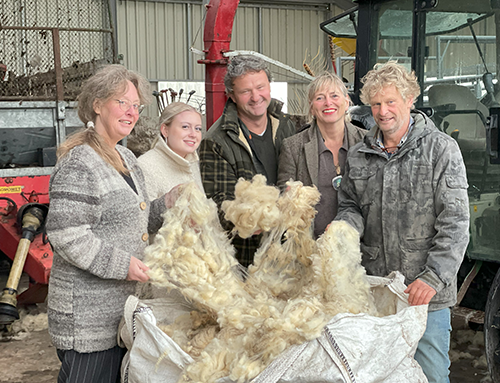
What is your typical customer audience?
Our typical customer is 45-plus, and the more conscious consumer. Those below 30 are very conscious, but they don’t want to spend the money yet or they buy second-hand. We sell them for €185 a pair, and a €50 discount as an introduction, which is a bit high for many people.
The older conscious consumer is the niche and part of the cohort I am reaching. A lot of today’s youth don’t even want to go to a shop anymore.
The combination of offline and online works well. Secondly, I get all the data – their email, phone number, street address, everything that is very valuable.
I noticed there is a big problem with the wool washing capabilities in the Netherlands. The infrastructure is gone. Also, the transportation cost will be high, both economically and for the environment.
In the Netherlands, and also in Ireland and the UK, a lot of the wool growers don't have 1,000 sheep. Most of them have 200 sheep and they have a couple of hundred kilos of wool. If you offer them 20 cents to the kilo, they will not change their behavior for that amount. You must have a fair value distribution to ensure that if you want the wool grower to change, he needs to be part of the added value.
That's another thing, but I also received the grant to investigate ultrasonic wool washing, so that's cool. What I found is that wool washing is a very high-energy, high-detergent process, as there’s a lot of manure to remove. But, with ultrasonic sound, you need less energy, and you need less detergent.
How did you apply for the grant?
My uncle is the wool grower and has the sheep. Some parties invest to increase the amount of income of those farmers and to increase the quality of the pasture and fields.
You need to increase the incentive to keep sheep in a good way and not throw out the wool, because that is not good at all. Everything is well and good until it costs them money, so it’s still the economics. That’s why my uncle is part of the fair value creation. With local washing capabilities, we can increase the volume, which is good.
I was at a robotics conference in Ljubljana and there were four or five private equities. One of them was really interested in the whole process, so I'm now also going to pitch it in Ireland, because they have a lot of wool there. The Connemara sheep have very coarse wool, which is unsuitable for knitting, as people like soft wool. However, the process I am using it for can be used, as I am felting. The more structure the wool has, the more beautiful it becomes.
This last grant had a turnaround time of two weeks. My uncle said, “Okay, I want to apply for this grant with you, and we have to deliver it in a week.” Within eight days, we got a positive response. Normally, it will take about three months, but they were very keen. It’s not a government grant, it’s a private organization that is funded by a lottery, making the process easier.
How do you maintain a sense of joy, enthusiasm, and energy in your professional life?
I gain enthusiasm from really diving into the subject. If you do something half-hearted, it is never fun. Even with the most tedious jobs, if you do them half-heartedly, it gets even worse. Don’t do anything half-hearted – that’s my advice.
Understanding why you’re doing things is also important.
Repetitive work will always remain that. If you know where you're going and why, that’s not a problem. For example, if you're in sports, you have to do those reps, because you know where your end goal is. That's the same in professional life.
If you go full power, then the energy will stay high, because being motivated in itself or to keep trying is not a thing for me, that doesn't work. You need to know where you are going or else you will lose interest quite fast. That’s my approach: Do the reps.
Thank you to Lennart for speaking to Georgia Wright, Director in our Finance & Accountancy recruitment division in the Netherlands.
Views and opinions contained within our Executive Interviews are those of the interviewee and not views shared by EMEA Recruitment.

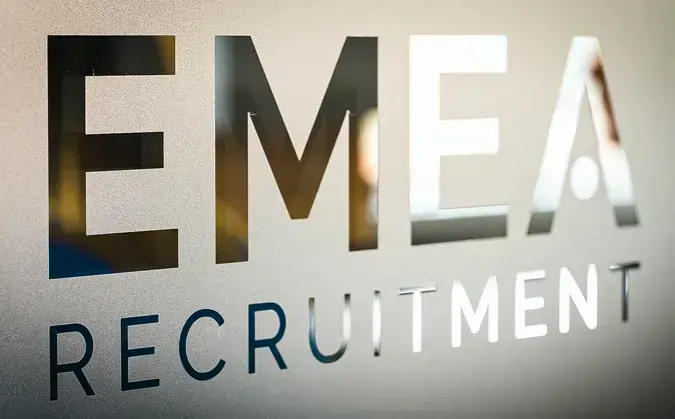
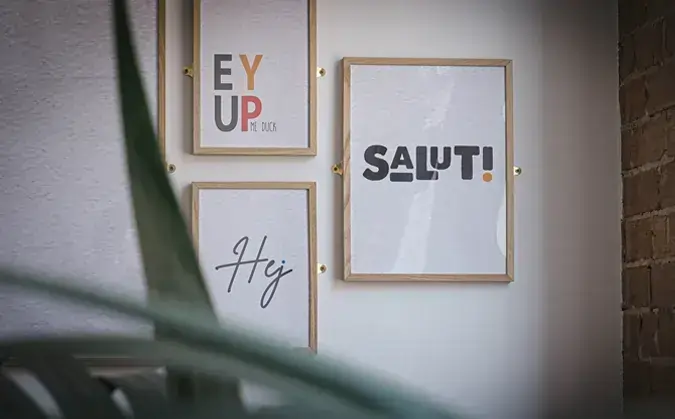


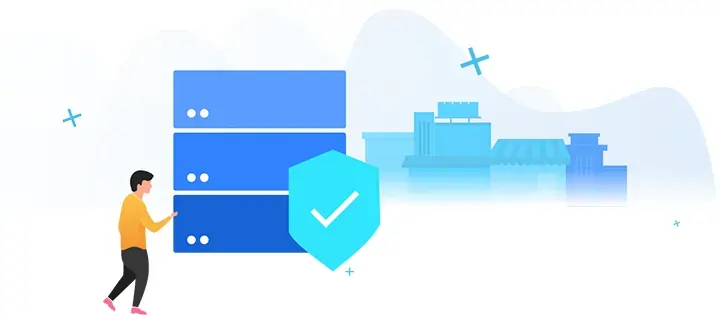
You can also use your social account to sign in. First you need to:
Accept Terms & Conditions And Privacy Policy